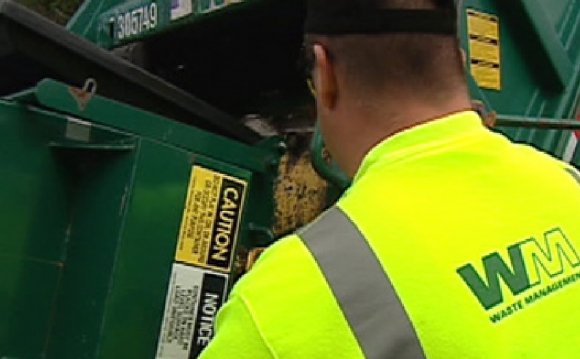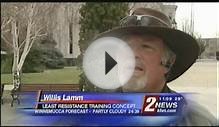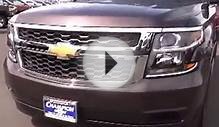
Introduction
The Carson City Sanitary Landfill is located in Carson City, a consolidated municipality. The site lies at 7001 Hwy 50 East at the southern end of Flint Drive. The entire site presently consists of 172.27 acres of which 117 acres currently comprise the landfill, and 34.6 acres consists of the southern landfill subarea. The property is zoned for PR (Public Regional) and master planned as conservation reserve/ public lands. The landfill is located on leased portions of BLM land, Assessors Parcel Numbers 008-521-20, 008-531-03 and 010-011-29. The landfill lies within portions of sections 1 and 12, Township 15 North, Range 20 East, and sections 6 and 7, Township 15 North, Range 21 East, (39 11' 23"N latitude and 119 40' 42" W Longitude). Adjacent properties are zoned public regional to the North, West, East, and South
Proposed Drainage System
The proposed drainage concept is to route all runoff from Areas A, B and C into a retention basin sized to contain a 24 hour, 100 year storm, at the south end of the site.
Fire Control Methods:
Burning of refuse at the CCSL is strictly prohibited. Smoking is prohibited on the landfill. However, fires can be created accidentally. All landfill employees are trained to recognize potential fire hazards and to report such to their supervisor. In the event of a fire, all landfill employees are responsible for evacuating and securing the scene. Immediate fire control measures are carried out by properly trained and equipped personnel
Special waste items accepted at the landfill and their disposal requirements are listed below: Pesticide/Herbicide Containers (not product): Metal, plastic, or glass containers and paper and plastic sacks or bags used for pesticides/herbicides, which are empty, are suitable for disposal.
Dead Animals:
Dead animals are buried separate from the public disposal area, and are covered immediately with soil, to prevent animal scavenging.
Asbestos:
Asbestos is disposed in the Class III site. The ECA tracks all asbestos containing materials (ACM) related to building demolitions and renovations from the time of permit application to ultimate disposal, to ensure compliance with the National Emissions Standards of Hazardous Air Pollutants (NESHAP) regulations and NAC 444.965 through 444.976. The NESHAP regulations require friable ACM to be removed by "wet method", properly contained (6 mil plastic), and labeled in accordance with EPA or OSHA requirements. These requirements in addition to NAC 444.971 (1) ensure that fibers will not be released during transport. The ECA requires all ACM (friable or non-friable) to be wrapped in plastic (minimum 6 mil.), and the shipment must be accompanied by a manifest issued by the ECA. Once the ACM abatement has been approved and completed, the ECA requires a minimum of 24 hours notice prior to disposal. ACM generated outside the corporate boundaries of Carson City is not manifested by the ECA and disposal at the CCSL is prohibited. The manifest contains the information listed in NAC 444.973.
Tires:
Tires that cannot be recycled are properly incorporated with other wastes and are placed on the ground surface or at the toe of the fill and covered with other wastes. In no case are waste tires allowed in the top four (4) feet of the final closure lift. However, waste tires are currently being segregated at the landfill gate. The collected tires are then transported by Ray's Tires to their facility in Sparks, Nevada, where they are shredded.
Waste Engine Oils, Anti-freeze and Batteries:
Recycling areas are provided at the landfill gate for free public disposal of waste engine oils, anti-freeze and vehicle batteries. Commercial wastes of this type are prohibited from disposal or recycling at the landfill. The used oil is picked up weekly by a licensed Oil Transporter. The landfill receives a limited amount of anti-freeze at the drop-off site and is removed on an as-needed basis. Batteries are removed from the landfill every two weeks.
Industrial Waste:
For the purpose of this plan, "Industrial Waste" means wastes resulting from any process of industry, manufacturing, trade or business, or from the development or recovery of any natural resource. Prior to the disposal of any industrial waste, it must first be inspected by the ECA. When applicable, the waste is sampled by the ECA. Samples are sent, under chain-of-custody, to a Nevada-certified laboratory and analyzed using the Toxicity Characteristic Leaching Procedure (TCLP) EPA Method 8240. The analytical data is then submitted to the ECA for determination as to whether the waste is acceptable. Suspect analytical data may require additional sampling
Liquid wastes that are found to be acceptable are handled and disposed of in the following manner:
(1) The liquid waste hauler is directed to the designated disposal area, which is the soil borrow area in use at that time.
(2) The soil in the borrow area is scarified to a depth of 24 inches.
(3) The liquid waste is absorbed by the loosened soil as it is spread across the area.
(4) The area is then mixed with a bulldozer, adding dry soils, rendering a solid waste which is then transported to the working face and used for cover material, in combination with the alternative daily cover system.
(5) At this point the processes are repeated.
Medical/Infectious Waste (MIW):
For the purpose of this plan, "Medical/Infectious Waste" means waste materials derived from cultures and stocks of infectious agents and associated biological materials; pathological wastes; contaminated animal carcasses and body parts; all sharps; human blood and blood products; and by-product wastes such as, but not limited to, dressings, bedding, swabs, pads and gloves, and invasive, disposable equipment which have been, or may have been, in contact with known...
RELATED VIDEO












